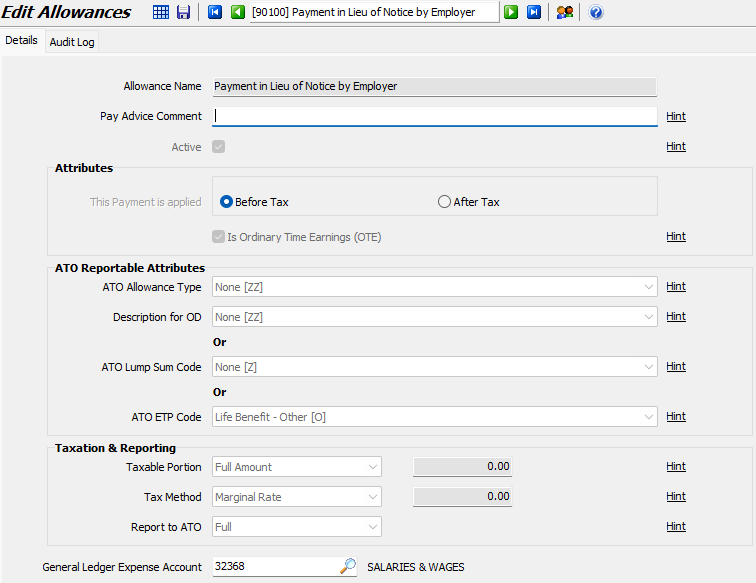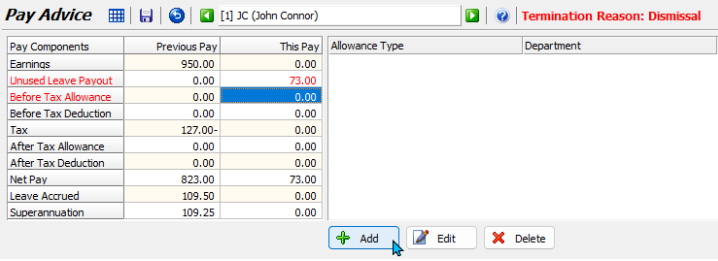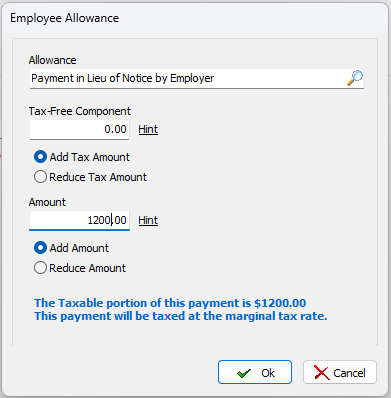Marlin HR enables robust handling of terminations in lieu of notice.
If you did not give an employee the required notice of termination you may be required to make an in lieu of notice payment to them.
The ATO requires this payment to be reported with an ETP Code of 'O' (for Other) and have superannuation paid on it.
For expert guidance, please consult the ATO, Fair Work Ombudsman, your employer association or a qualified tax accountant about:
- Employee payments (types and amounts)
- Tax withholding requirements
- STP codes for ATO submissions
Quick Reference
In Lieu of Notice Allowances
There should be an allowance type already set up in HR called Payment In Lieu of Notice by Employer.
This can be checked by selecting System > Allowances from the menu bar.

Click Update to update the list with the lates Megabus-supplied allowances.
Do not use Standard Hours for a payment in lieu of notice as it will not be reported correctly to the ATO and the system will calculate leave accruals on the standard hours and add them to the unused leave payouts.
In Lieu of Notice Payments
Payrun > Payrun Processing > Initialise > [Employee]
To add an in lieu of notice payment:
- Select Before Tax Allowance in the employee's Pay Advice window
- Click on the Add button below

In the Employee Allowance pop-up:
- Use the Allowance picker at the top to select Payment in Lieu of Notice by Employer
- Leave the Tax-Free Component as $0
- Enter the Amount
- Tick Add Amount checkbox

To determine the Amount:
- Multiply the number of hours you are required to pay by the employee's Standard Pay Rate (as entered in Employee Maintenance).
- If you are unsure about this, please seek expert advice from your tax accountant, employer association or the ATO.
Do not use standard hours for a payment in lieu of notice. This will not be reported correctly to the ATO and also cause HR to calculate leave accruals on the standard hours and add them to the unused leave payouts.
